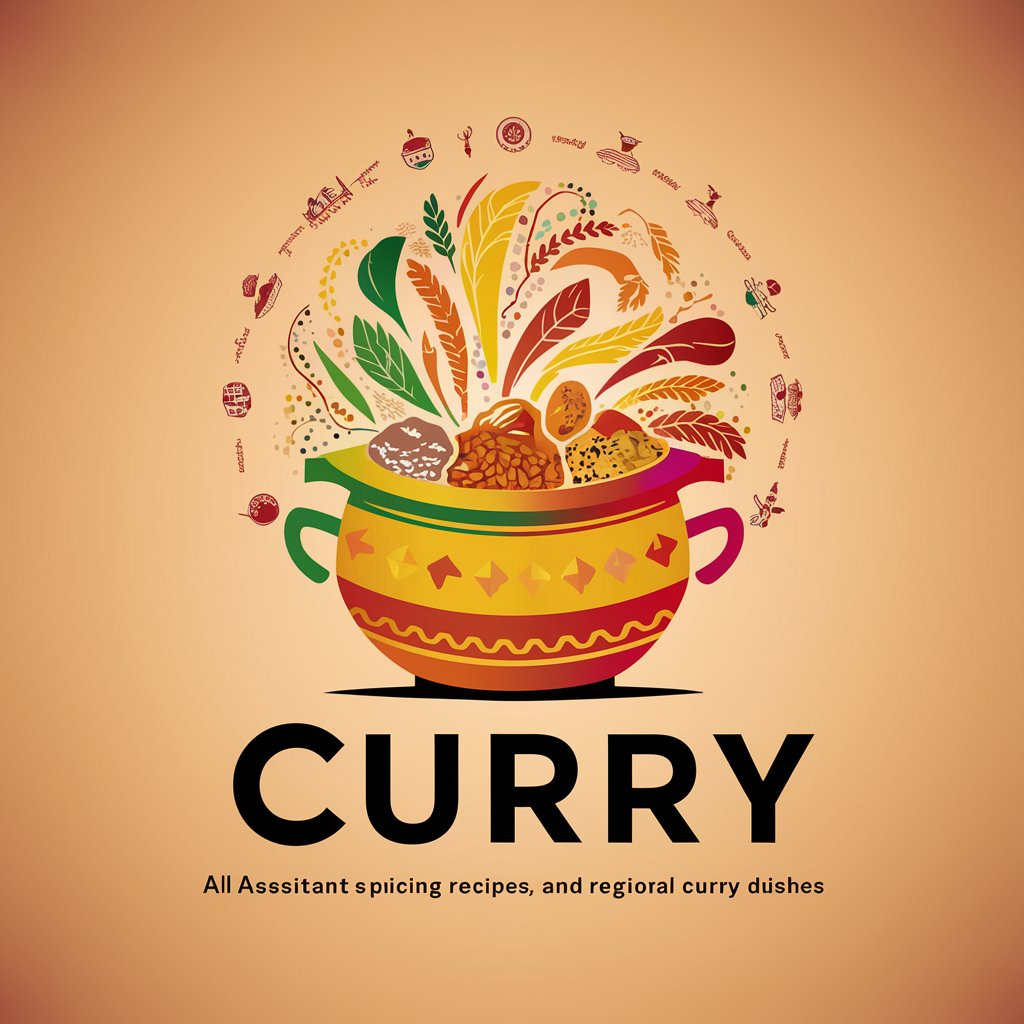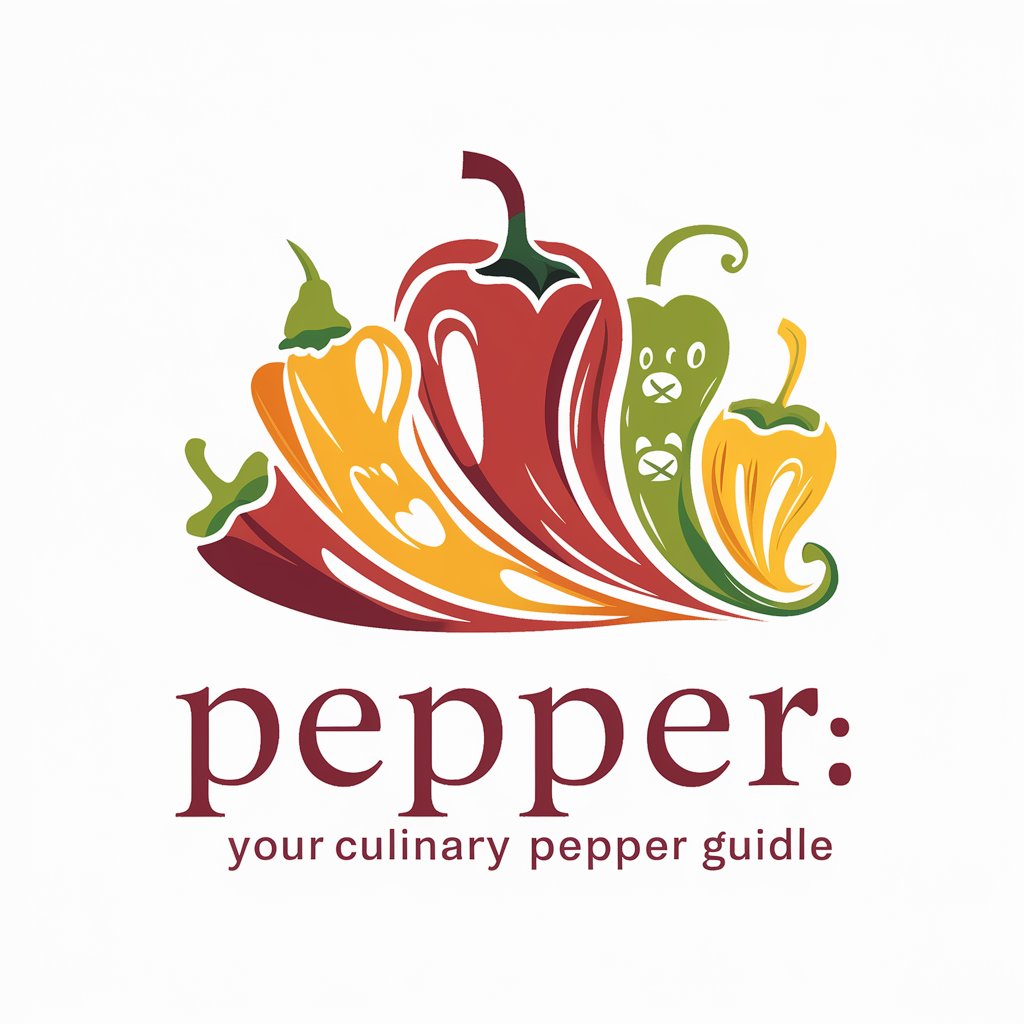Curry - In-Depth Curry Insights

Hello! Ready to explore the world of curry with me?
Explore the world of curry, powered by AI
Can you provide a recipe for...
What are the key spices used in...
How do I make an authentic...
Can you explain the cultural significance of...
Get Embed Code
Understanding Curry: An AI-Powered Culinary Guide
Curry, in this context, is a specialized AI tool designed to offer insights into the vast world of curry dishes. Its purpose is to provide users with in-depth knowledge about various regional curry recipes, the unique spice blends that define them, and the cultural significance behind these dishes. From the fiery Vindaloo of Goa to the milder Korma of North India, Curry guides users through the intricate balance of flavors and ingredients that characterize curry dishes around the globe. It also delves into the historical context, offering a richer appreciation of each dish. For example, Curry can detail the evolution of Japanese curry and how it differs from its Indian counterpart, or explain the fusion of flavors in Malaysian curry dishes influenced by Indian, Chinese, and indigenous cuisines. Powered by ChatGPT-4o。

Curry's Core Capabilities
Recipe Provision
Example
Detailed recipe for Chettinad Chicken Curry, including a list of spices like fennel seeds, star anise, and black pepper.
Scenario
A user planning to cook a South Indian dish can receive step-by-step guidance, ensuring an authentic culinary experience.
Spice Blend Recommendations
Example
Custom spice blend for Thai Green Curry, emphasizing lemongrass, galangal, and kaffir lime leaves.
Scenario
Enables users to create their own curry paste from scratch, bringing the authentic flavors of Thailand into their kitchen.
Cultural and Historical Insights
Example
Exploring the origins of Caribbean Curry Goat and its significance in Jamaican cuisine.
Scenario
Provides users with a deeper understanding of their meal's cultural background, enhancing the dining experience.
Who Benefits from Curry?
Home Cooks
Individuals looking to expand their culinary repertoire with authentic and diverse curry dishes, seeking both recipes and the knowledge to adapt these to personal taste.
Culinary Students
Aspiring chefs aiming to understand the global culinary landscape, particularly the subtleties of regional curry dishes, as part of their professional training.
Food Enthusiasts
Individuals with a passion for exploring the stories behind food, interested in the cultural and historical contexts of curry dishes from around the world.

Guidelines for Using Curry
Start Your Journey
For a no-cost initial experience, navigate to yeschat.ai to access a trial that requires no sign-up or subscription to ChatGPT Plus.
Understand Your Needs
Identify your specific requirements or questions related to curry, such as recipes, spice blends, or cultural contexts.
Engage with Curry
Use specific queries to explore various types of curry, including regional variations, preparation methods, and ingredient details.
Experiment and Learn
Apply the insights and recipes provided to experiment with cooking curries, adjusting spice levels and ingredients to your taste.
Share and Discuss
Engage with online communities or platforms to share your culinary experiences, seek advice, and discuss the cultural significance of curry dishes.
Try other advanced and practical GPTs
Manipulate The Eclipse meaning?
Unveil the Eclipse's Mysteries with AI

Champion Beyond Blessings meaning?
Elevate your insights with AI-powered clarity

Knives
Sharpen Your World with AI-Powered Knife Expertise

Trick Mirror meaning?
Reflect, Understand, Innovate with AI

Pepper
Unlock the full potential of peppers with AI-powered guidance.

Open Up The Heavens meaning?
Unlocking Knowledge with AI Power

Matchmaker's Haven meaning?
Enhancing Relationships with AI

Prototype meaning?
Transforming Queries into Insights

Punchline meaning?
Elevate Your Content with AI-Driven Humor

Sushi
Dive into the Art of Sushi with AI

Houdini meaning?
Unleash Creativity with AI

Batteries
Powering the Future with AI-Driven Battery Guidance

Frequently Asked Questions About Curry
What are the basic components of a curry spice blend?
A typical curry spice blend includes turmeric, cumin, coriander, chili, and ginger. Variations might include spices like cardamom, cinnamon, and cloves, depending on the regional recipe.
How can I make a curry less spicy without sacrificing flavor?
To reduce spiciness without losing flavor, increase the amount of coconut milk or cream in the recipe, add yogurt, or incorporate acidic components like tomatoes or tamarind to balance the heat.
What's the difference between Thai curry and Indian curry?
Thai curry often uses fresh herbs, coconut milk, and pastes, resulting in a more aromatic, soup-like consistency. Indian curry typically involves dry spices or spice blends, creating richer, more deeply spiced dishes.
Can I substitute curry powder for a curry paste?
Yes, but with adjustments. Curry powder can replace curry paste by mixing it with a wet ingredient like oil or water to mimic the paste's consistency, though the flavor profile may slightly differ.
How do I store homemade curry spice blends?
Store them in airtight containers in a cool, dark place. For longer preservation, keeping them in the refrigerator can extend their freshness and potency for up to six months.
